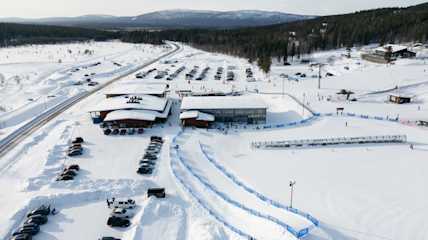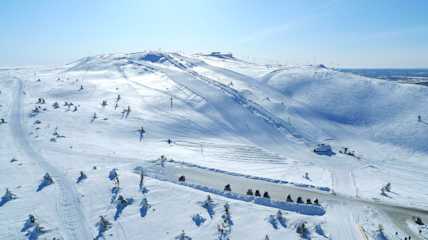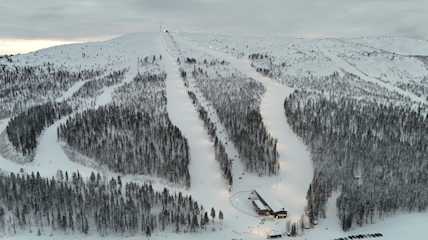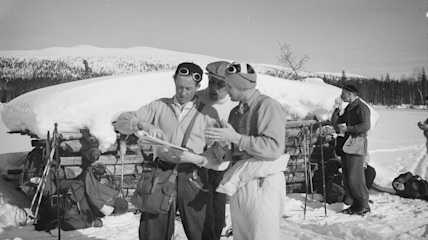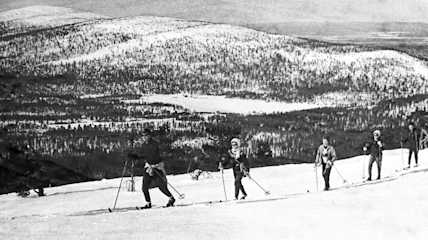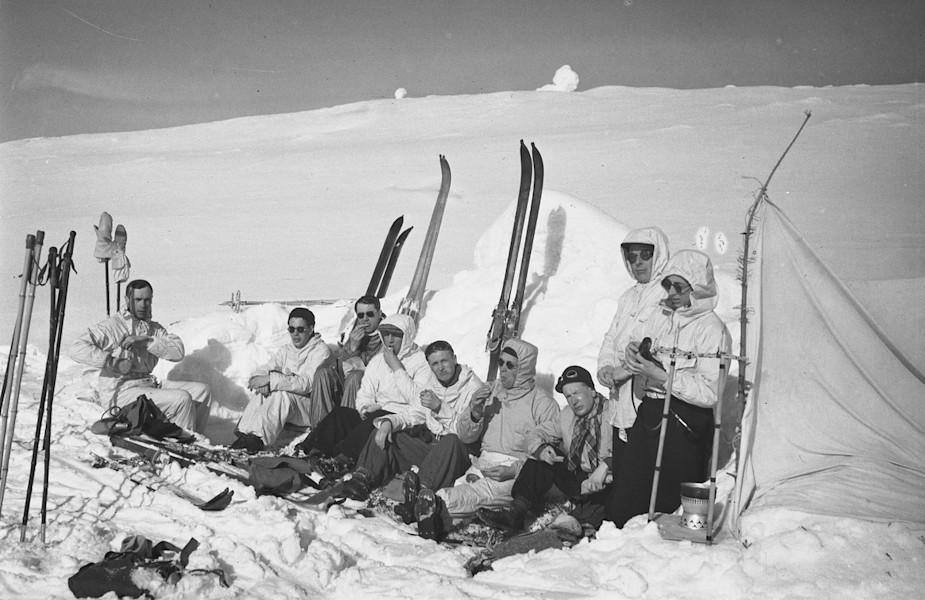
The Charm of Levi's Snow
From Southern Finland's perspective, Lapland remained an unreachable mystical region in the north for most people in the 1800s. Untouched wilderness, wild animals, and nights painted with the Northern Lights were romanticized in literature as an experience that drifted into the dreams of those interested in outdoor adventures. It's no wonder travelers continuously ventured farther north. Slowly but surely.
The rumble of the modernizing world reached Lapland gradually. The railway reached Rovaniemi in 1909, from where travelers continued by horse-drawn carts along gravel roads to places like Kittilä. Tourist services were mainly limited to coaching inns, which also extended to the village of Sirkka near Levi and Kätkä fells. Transportation links were a crucial enabling factor, as without roads, there were no tourist crowds.
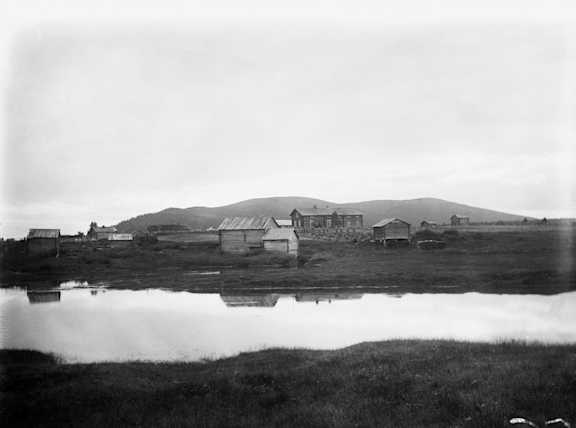
The houses of Erkkilä (Laurila) in the village of Sirkka, with the Kätkä fell in the background. Samuli Paulaharju, 1920, Ethnographic Image Collection, Finnish Heritage Agency.
Alongside summer excursions, a new form of outdoor activity emerged, especially in the interwar period: fell skiing. Initially, it was primarily women's sports organizations that became enthusiastic about it, with their pioneers considering the fell the best place to learn skiing. In male-dominated groups, speed took precedence over style. However, recreational skiing quickly gained popularity regardless of gender, as the fells offered such enjoyable and captivating experiences. Moreover, in Finland, the allure of speeding down slopes was also realized.
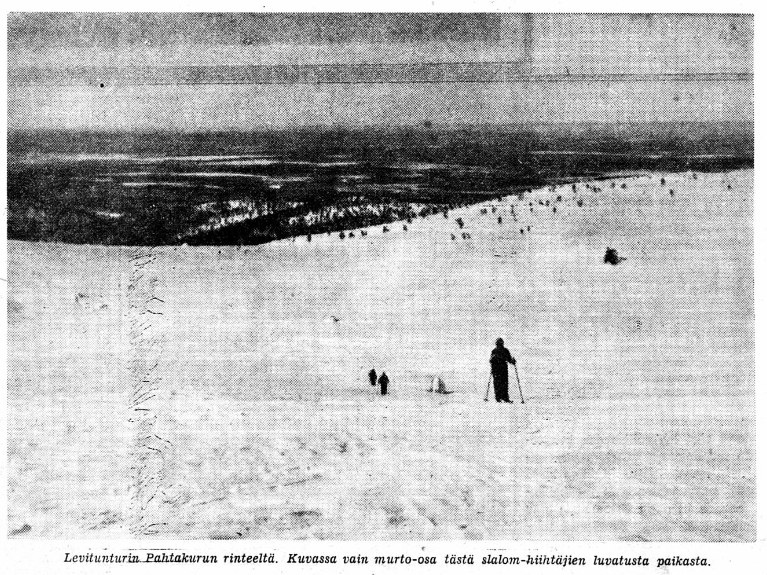
Excerpt from Sakari Varhee's article 'Every Skier Once to the Fells', Helsingin Sanomat 10.5.1936.
Sakari Varhee, enchanted by fell skiing, wrote a lengthy article praising Levi fell in Helsingin Sanomat in the spring of 1936. Among Levi's strengths as a skiing destination, he cited the relatively easy travel and, especially, the accommodation's proximity to the fell itself. And most importantly: 'One certainly does not make oneself guilty of exaggeration when praising the terrain of Levi fell as almost ideal.'
The growth in Levi's attractiveness was not solely based on its timeless, skiable fells and the village's location, but also on the fact that local residents viewed tourism as a positive development. In 1936, teacher Eeva Lehtisalo organized a service course for 12 women in Sirkka. The course taught how to serve and accommodate tourists. This was a concrete step in transforming the limited coaching inn capacity into a broader and higher-quality home accommodation business.

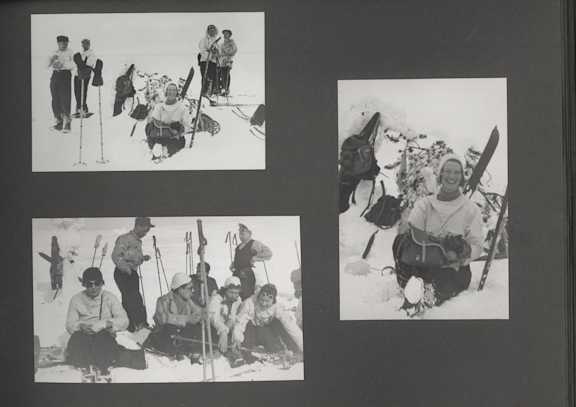
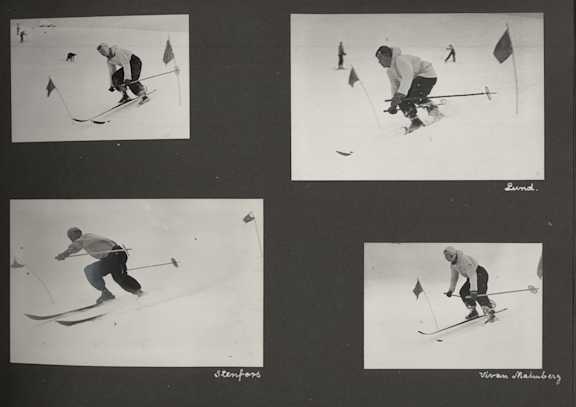
Gunnar Stenfors' album, Levi Ski Resort archive.
The Finnish-Swedish Skiing Association SFS particularly adopted Levi as its 'home base,' with courses led by Gunnar Stenfors, Rabbe and Birger Schauman, and a few other instructors trained in Sweden. Daylight hours were spent honing ascent and descent techniques in the open fell, while evenings were relaxed and intimate, spent drying equipment.
As early as the 1930s, Finland's pioneers of alpine skiing were carving the slopes of Levi, as evidenced by the lively images from the spring of 1937. Gunnar Stenfors was one of the leading promoters of alpine skiing in Finland. He competed, for example, in the Alpine Skiing World Championships in Zakopane, Poland, in 1939. However, even more significant for Finnish sports culture than his competitive career was his promotion of fell tourism in the Levi and Ylläs regions.
The seeds for tourism on Levi fell, professional skiing instruction, and even alpine skiing competitions were planted in the village of Sirkka almost 90 years ago. The ancient fell, improving transportation links, and better services near the most enjoyable outdoor activity were a combination waiting for more passionate contributors. That time came in the latter half of the 20th century.
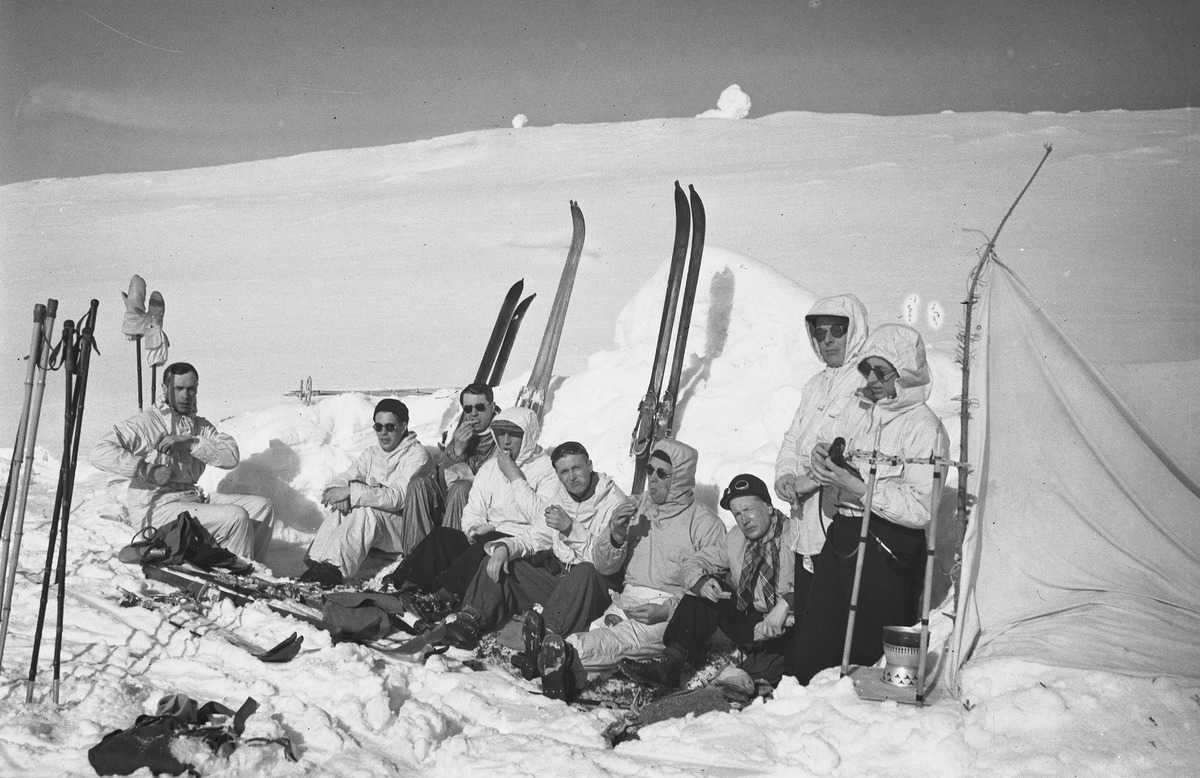
Tourists at Levi Fell in Kittilä in the 1930s. Nybom, Collection of the Tourism Promotion Centre, Finnish Heritage Agency.
Kalle Rantala
Exhibition Manager
TAHTO
The Ultimate Levi Exhibition on display at TAHTO, Helsinki Olympic Stadium, January 25th to April 7th, 2024."

